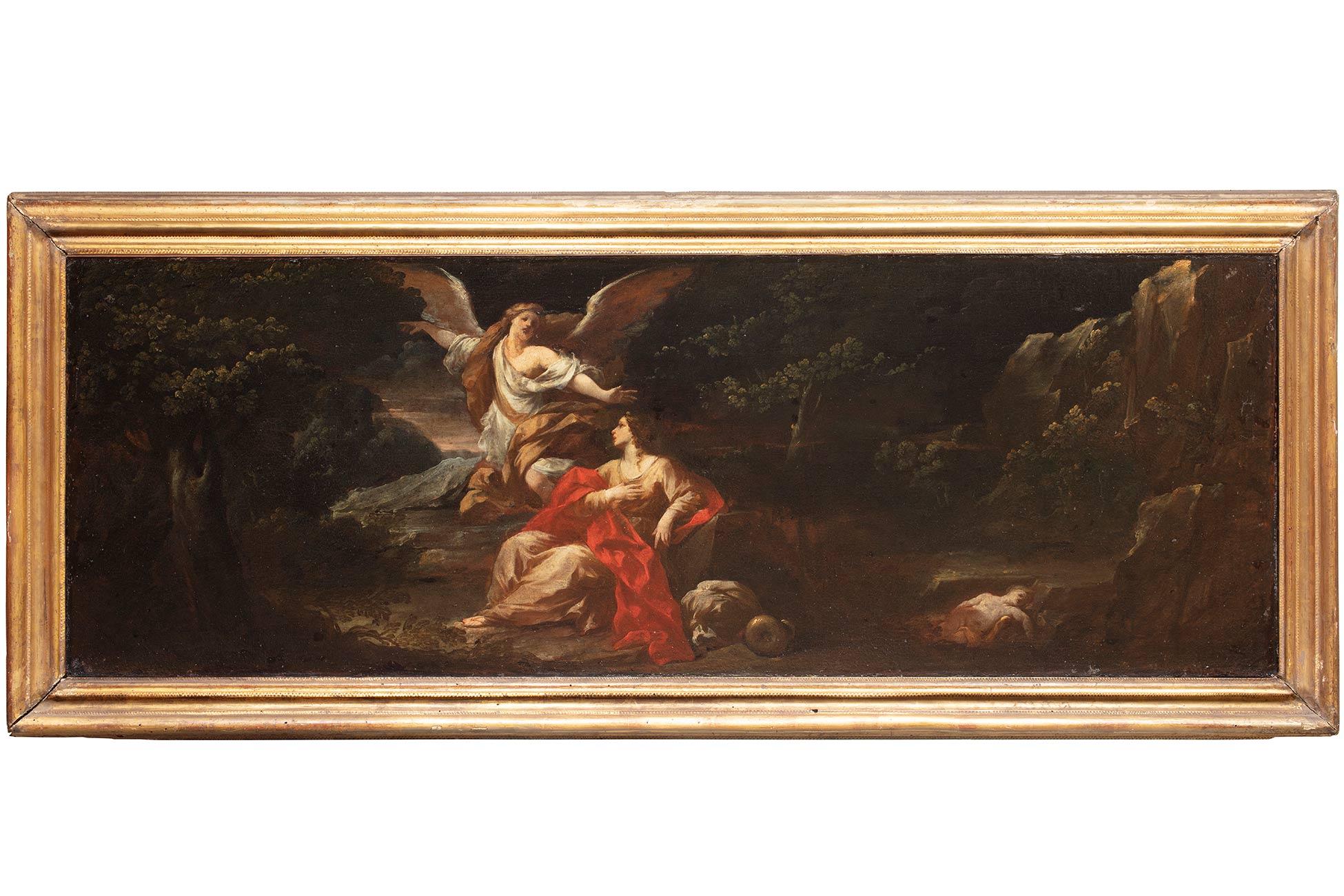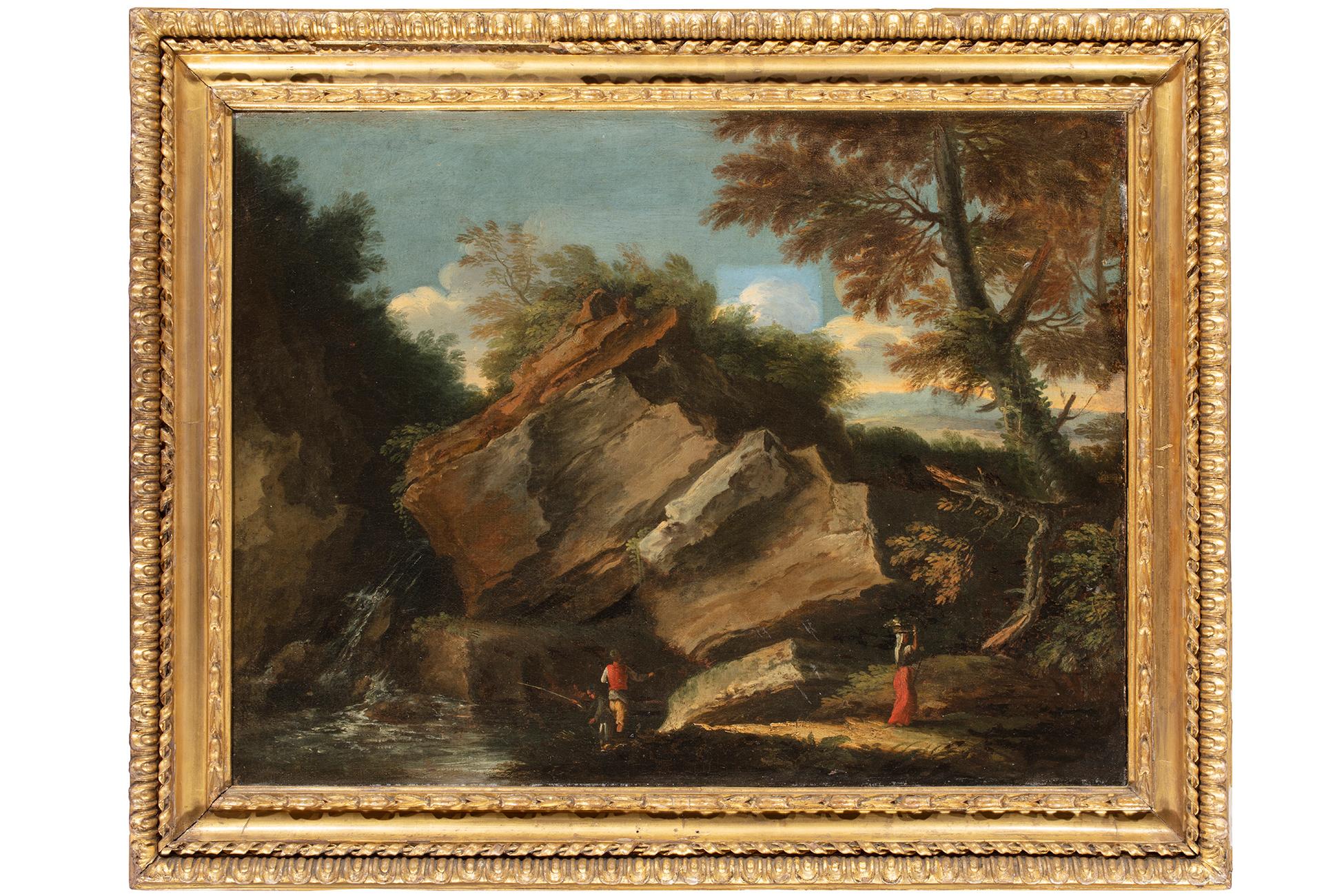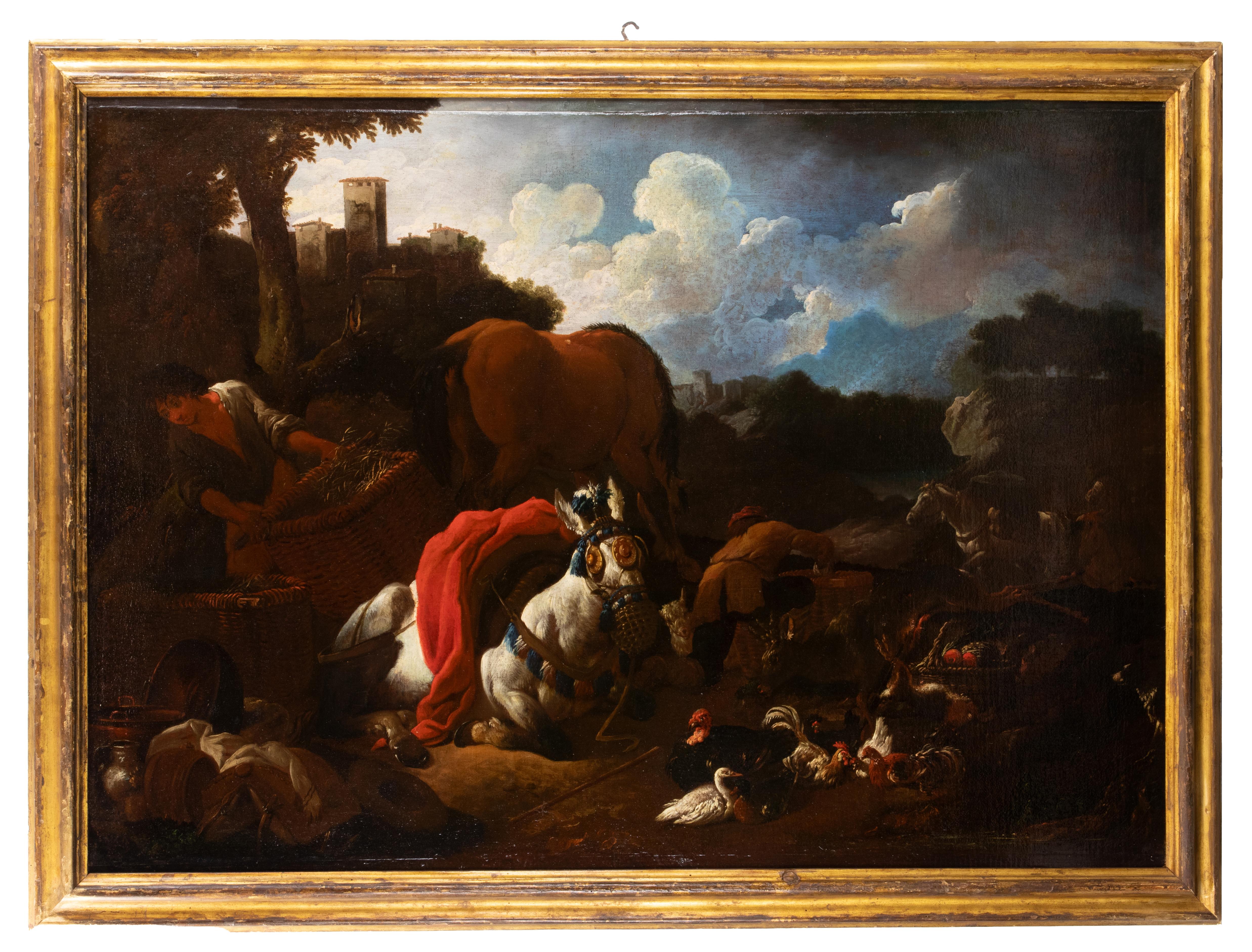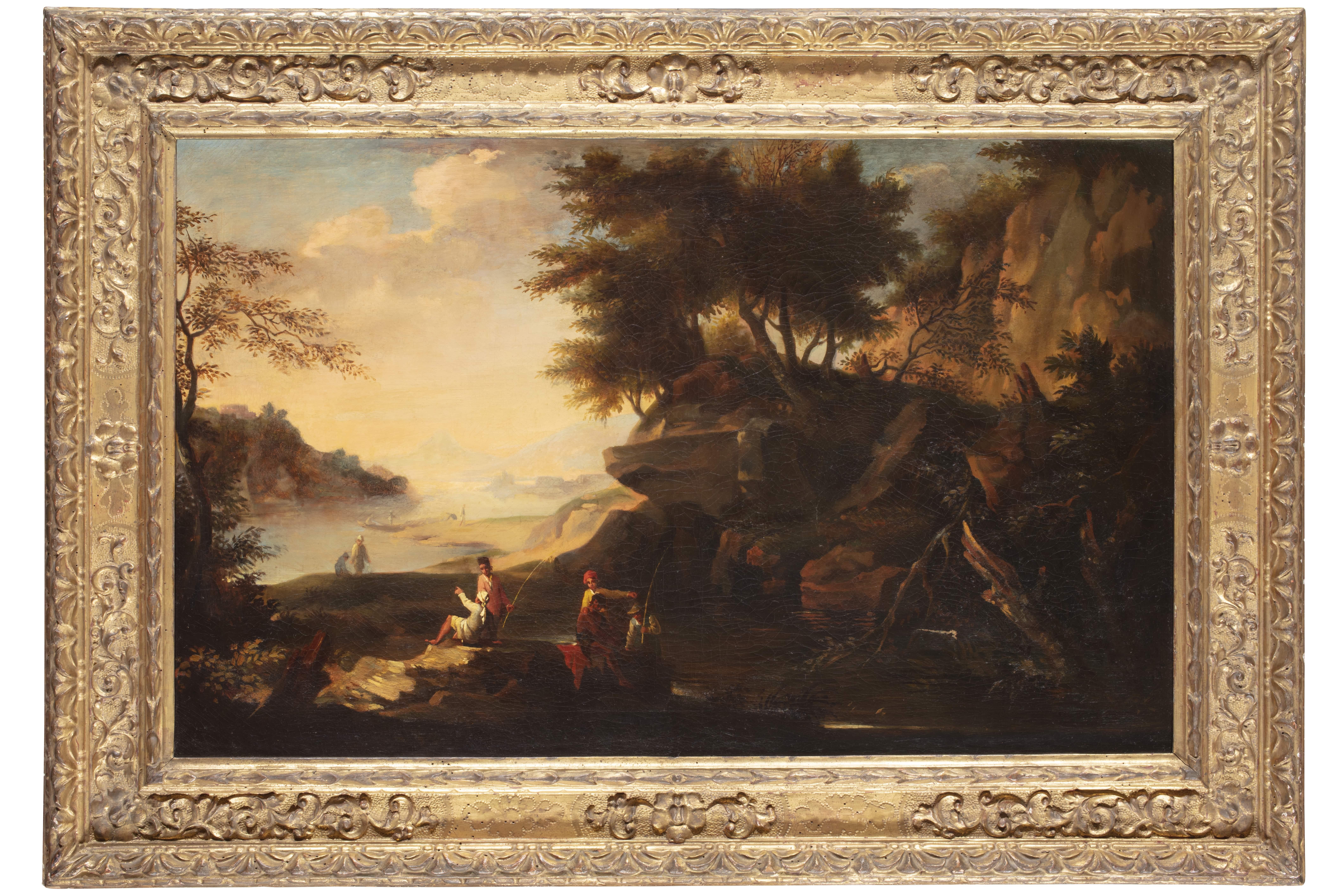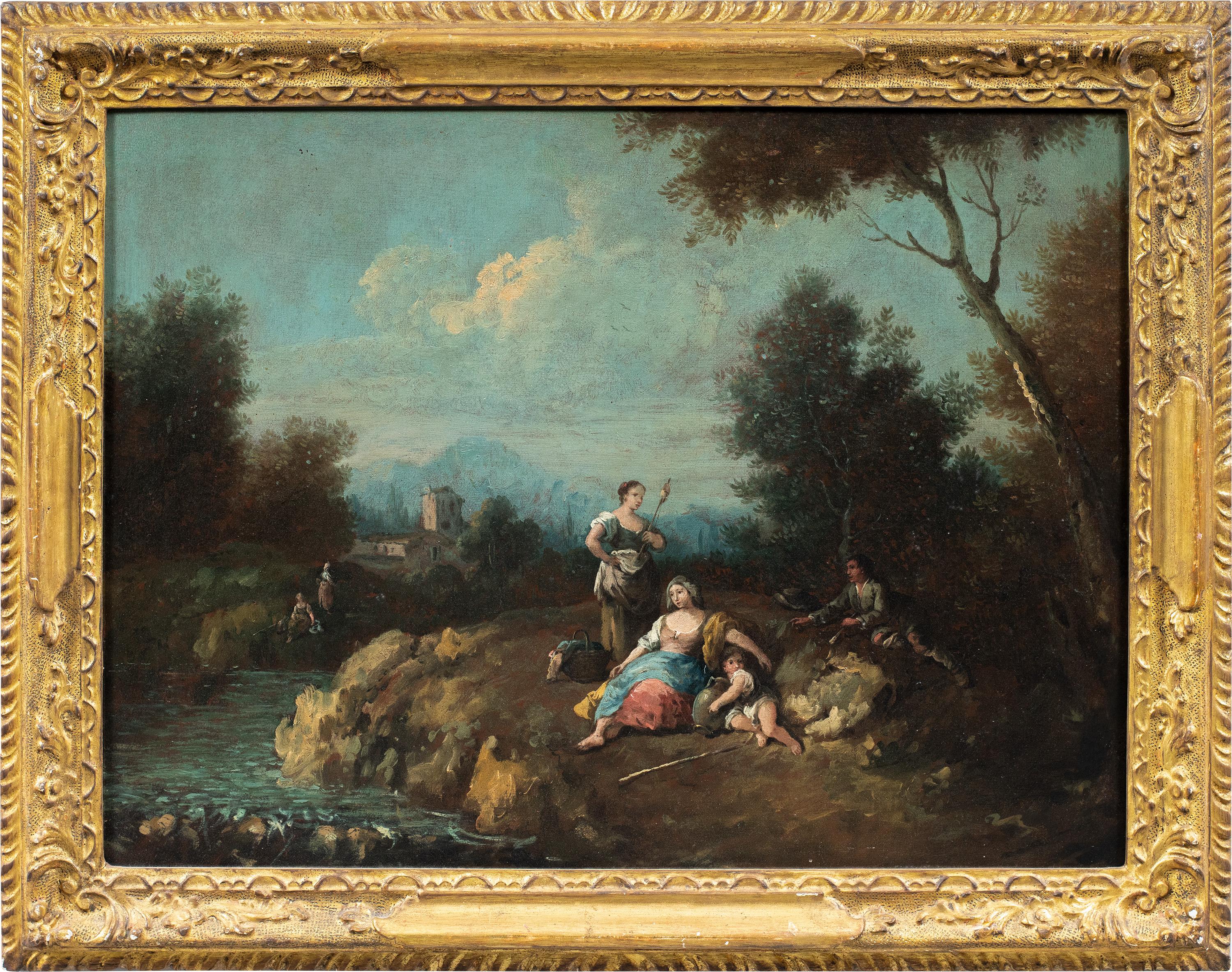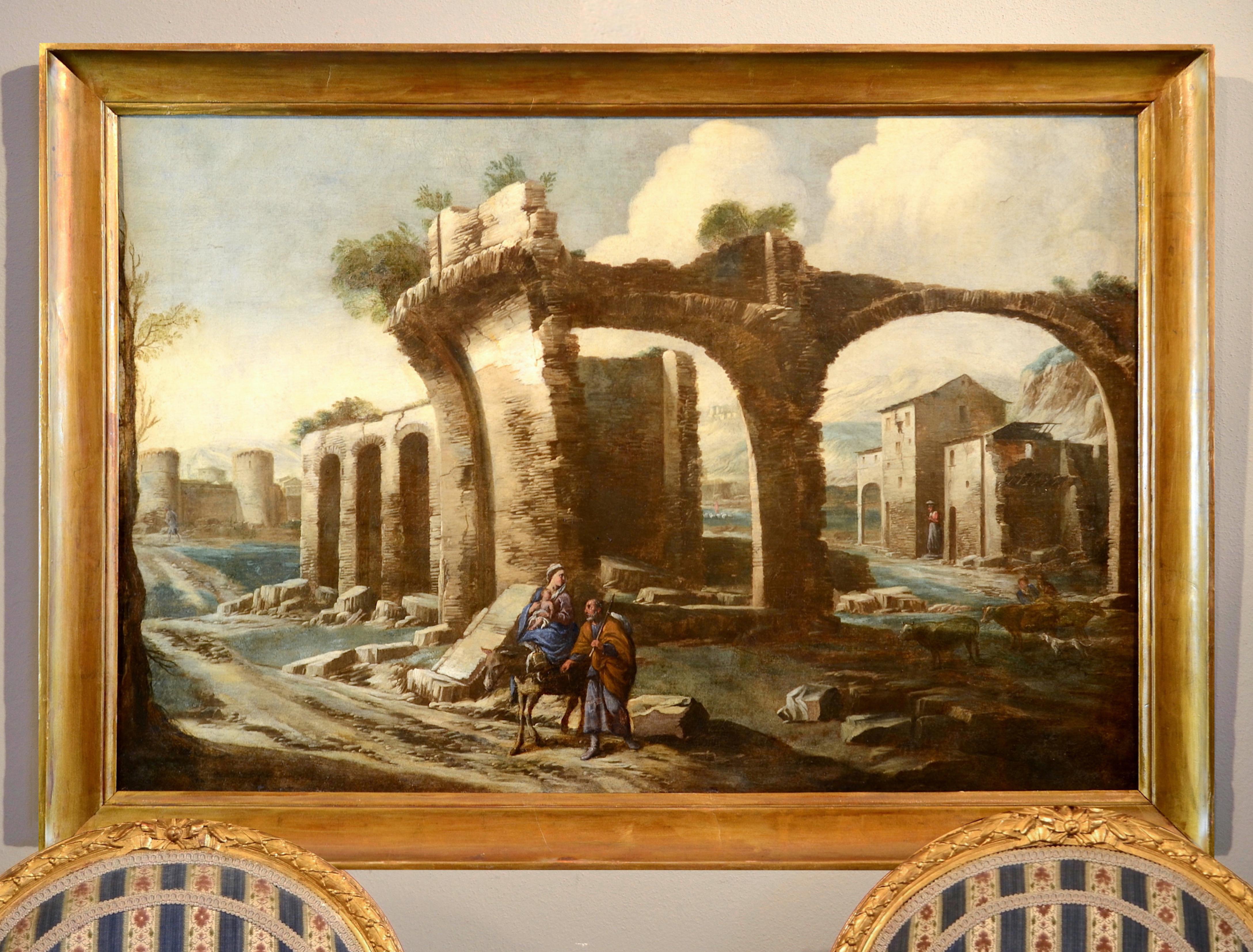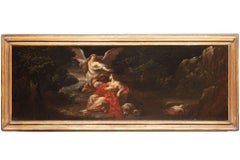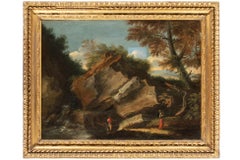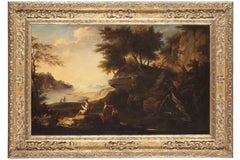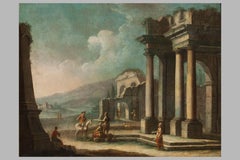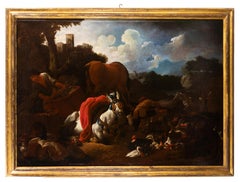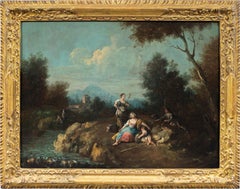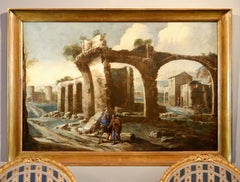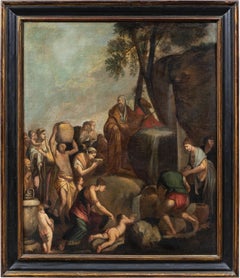Items Similar to 17th Century by Felice Torelli Rachel Hiding the Idols Oil on Canvas
Video Loading
Want more images or videos?
Request additional images or videos from the seller
1 of 15
Felice Torelli17th Century by Felice Torelli Rachel Hiding the Idols Oil on CanvasLate 17th Century
Late 17th Century
$15,502.01
$19,377.5120% Off
£11,595.38
£14,494.2220% Off
€13,000
€16,25020% Off
CA$21,417.30
CA$26,771.6220% Off
A$23,353.27
A$29,191.5820% Off
CHF 12,393.34
CHF 15,491.6820% Off
MX$282,333.43
MX$352,916.7820% Off
NOK 156,846.77
NOK 196,058.4620% Off
SEK 143,771.88
SEK 179,714.8520% Off
DKK 99,038.54
DKK 123,798.1720% Off
About the Item
Felice Torelli (Verona, Italy, 1667 - Bologna, Italy, 1748)
Title: Rachel Hiding the Idols
Medium: Oil on canvas
Dimensions: without frame 41 x 116 cm - with frame 52.5 x 127 cm
Original shaped and gilded wooden frame
Expertise by Massimo Francucci, art historian
Publications: Bozzetti, modelletti, sketches: dalla collezione di Giorgio Baratti (From the Giorgio Baratti Collection) curated by Anna Orlando, Agnese Marengo and Annalisa Scarpa, Genova, 2022, pp. 72, 73.
In this work we can admire the biblical scene of Rachel intent on hiding the idols taken from her father Laban, shortly before fleeing with her husband Jacob. The freshness of the stroke and the intense compositional intelligence played on precise balances confirm the critics' attribution to Felice Torelli (1667-1748), an artist destined to become one of the most important exponents of the eighteenth-century artistic scene in Bologna, Italy.
- Creator:Felice Torelli (1667 - 1748, Italian)
- Creation Year:Late 17th Century
- Dimensions:Height: 20.67 in (52.5 cm)Width: 50.01 in (127 cm)Depth: 1.97 in (5 cm)
- More Editions & Sizes:41 x 116 cm without frame - 52.5 x 127 cm with frame Price: $19,378
- Medium:
- Movement & Style:
- Period:Late 17th Century
- Condition:
- Gallery Location:Milano, IT
- Reference Number:1stDibs: LU170129959852
About the Seller
5.0
Vetted Professional Seller
Every seller passes strict standards for authenticity and reliability
Established in 1964
1stDibs seller since 2021
Typical response time: 22 hours
- ShippingRetrieving quote...Shipping from: Milano, Italy
- Return Policy
More From This Seller
View All17th Century by Felice Torelli Hagar and the Angel Oil on Canvas
Located in Milano, Lombardia
Felice Torelli (Verona, Italy, 1667 - Bologna, Italy, 1748)
Title: Hagar and the Angel
Medium: Oil on canvas
Dimensions: without frame 41 x 116 cm - wit...
Category
Late 17th Century Old Masters Landscape Paintings
Materials
Cotton Canvas, Canvas, Oil
$18,125 Sale Price
20% Off
17th Century by Pietro Montanini Landscape Oil on Canvas
Located in Milano, Lombardia
PIETRO MONTANINI (Perugia, Italy, 1619 - 1689)
Title: Landscape
Medium: Oil on canvas
Dimensions: without frame 50 x 65 cm - with frame 64 x 79 cm
An...
Category
17th Century Old Masters Landscape Paintings
Materials
Canvas, Oil, Cotton Canvas
$10,112 Sale Price
22% Off
17th Century by Jacob de Heusch Pair of Landscapes Oil on Canvas
Located in Milano, Lombardia
Jacob De Heusch (Utrecht, Netherlands, 1657 – Amsterdam, Netherlands, 1701)
Title: Pair of Landscapes
Medium: Oil on canvas
Dimensions: without frame 50 x 8...
Category
17th Century Old Masters Landscape Paintings
Materials
Canvas, Oil
18th Century By Giovanni Domenico Gambone Pair of Capricci Oil on Canvas
Located in Milano, Lombardia
Giovanni Domenico Gambone (1720 - 1793)
Title: Pair of Capricci
Medium: Oil on canvas
Dimensions: without frame 85 x 112 cm - with frame 97 x 124 cm
The price is intended for the couple of paintings.
Expertise by Professor Giancarlo Sestieri.
This pair of paintings by Giovanni Domenico Gambone (1720 – 1793) depicts an architectural capriccio with archaeological ruins and people who interact with each other. In one of the two artworks we can easily see a man on a horse...
Category
Mid-18th Century Old Masters Landscape Paintings
Materials
Canvas, Oil
18th Century By Vincenzo Re The Pool of Bethesda Oil on Canvas
Located in Milano, Lombardia
Vincenzo Re (Parma, Italy, 1695 - Naples, Italy, 1762)
Title: The Pool of Bethesda
Medium: Oil on canvas
Dimensions: without frame 50 x 62 cm - wi...
Category
18th Century Old Masters Landscape Paintings
Materials
Canvas, Oil
$8,394 Sale Price
20% Off
18th Century by Nicola Viso The adoration of the magi Oil on canvas
Located in Milano, Lombardia
Nicola Viso, (active 1724 – 1742)
Title: The adoration of the magi
Medium: Oil on canvas
Dimensions: without frame 63 x 100 cm – with frame 76.5 x 114.7 x 4.5 cm
Signed “N. Viso. f” ...
Category
18th Century Old Masters Figurative Paintings
Materials
Canvas, Oil
You May Also Like
Landscape with Merchants Arranging the Goods - Oil Paint - Late 17th Century
Located in Roma, IT
Oil on canvas attributed to Philipp Peter Roos Rosa da Tivoli, realized in the late 17th Century in Italy.
Large work with very fine workmanship, in particular in the creation of an...
Category
Late 17th Century Baroque Figurative Paintings
Materials
Oil
Giuseppe Zais (Venetian master) - 18th century landscape painting - Figures
By Giuseppe Zais (Canale d'Agordo, Belluno 1709 - Treviso 1781)
Located in Varmo, IT
Giuseppe Zais (Forno di Canale 1709 - Treviso 1784) - Landscape with shepherds and spinner.
48 x 63.5 cm without frame, 59 x 74.5 cm with frame.
Oil on canvas, in a carved and gild...
Category
Mid-18th Century Rococo Figurative Paintings
Materials
Canvas, Oil
Landscape Paint Oil on canvas Italy 17th Century Quality Old master Holy family
By Antonio Travi
Located in Riva del Garda, IT
Antonio Travi, called Sestri
(Genoa, Sestri Ponente 1608 - Genoa 1665)
Landscape with ruins and biblical scene
First half of the seventeenth century
oil on canvas, 82 x 121 cm
The beautiful painting published, which presents a vast landscape with architectural ruins, fully reflects the pictorial poetics of Antonio Travi (Sestri Ponente 1608 - Genoa 1665), the first landscape painter of the Genoese pictorial school; A poetic that remains constant throughout his career: Bernardo Strozzi...
Category
17th Century Old Masters Paintings
Materials
Oil
Giulio Carpioni workshop (Venetian) - 17th century figure painting - Moses
By Giulio Carpioni
Located in Varmo, IT
Giulio Carpioni (Venice 1613 - Vicenza 1678) workshop of - Moses makes water flow from the rocks.
82 x 68 cm without frame, 97 x 83 cm with frame.
Oil on canvas, in wooden frame (n...
Category
Early 17th Century Baroque Landscape Paintings
Materials
Canvas, Oil
$2,981 Sale Price
28% Off
17th Century Oil on Canvas Venetian Style Landscape with Characters Painting
Located in Vicoforte, Piedmont
Antique Italian painting from the 17th century. Oil on canvas artwork depicting a landscape with figures from the Venetian school, of good pictorial quality. We see four characters a...
Category
Antique 1640s Italian Paintings
Materials
Canvas
Andrea Locatelli, Italian/Roman Landscape Painting with Figures, 18th Century
Located in CH
Andrea Locatelli (Rome, 1693–1741)
A Roman Landscape with Figures
Oil on canvas
This elegant landscape painting, populated with figures set amid the ...
Category
Antique Early 18th Century Italian Rococo Paintings
Materials
Canvas
More Ways To Browse
Antique Idols
James Reynolds
Josep Maria Vayreda Canadell On Sale
Joshua Tree Painting
Jules Noel
Kansas Oil Painting
Kit Carson
La Montagne Painting
Landscape Painting By Collins
Large Tropical Painting
Leon Augustin Lhermitte
Lobster Boat
Louis Alexandre Cabie
Low Country Painting
Lynn Beach
Manner Of Canaletto
Margaret Parker
Matterhorn Painting
